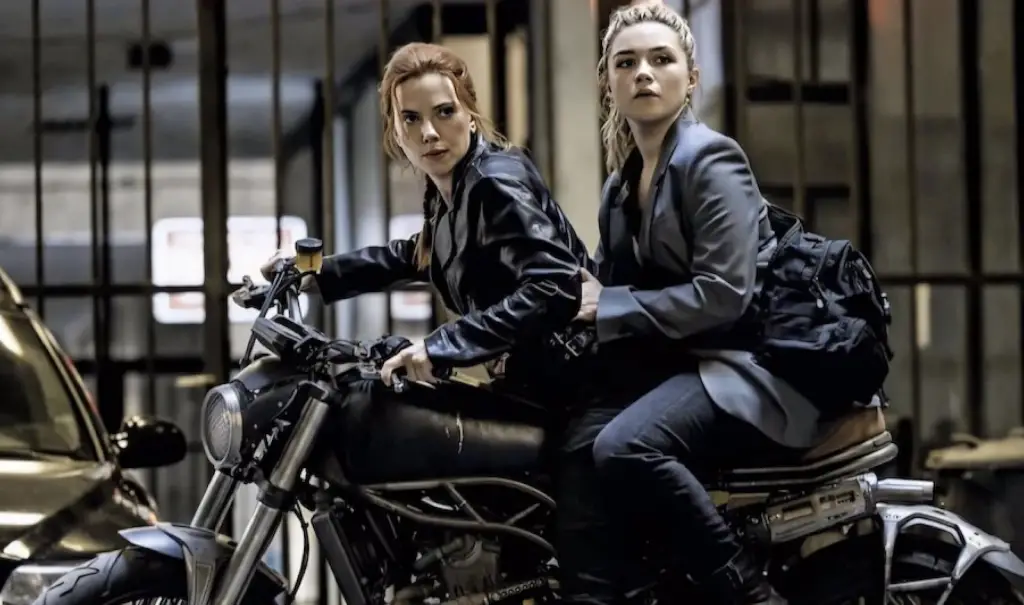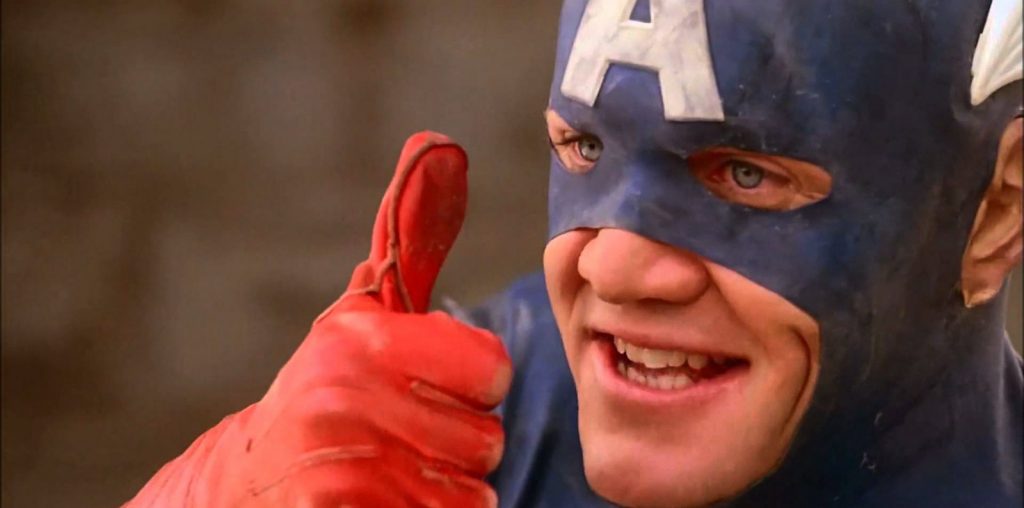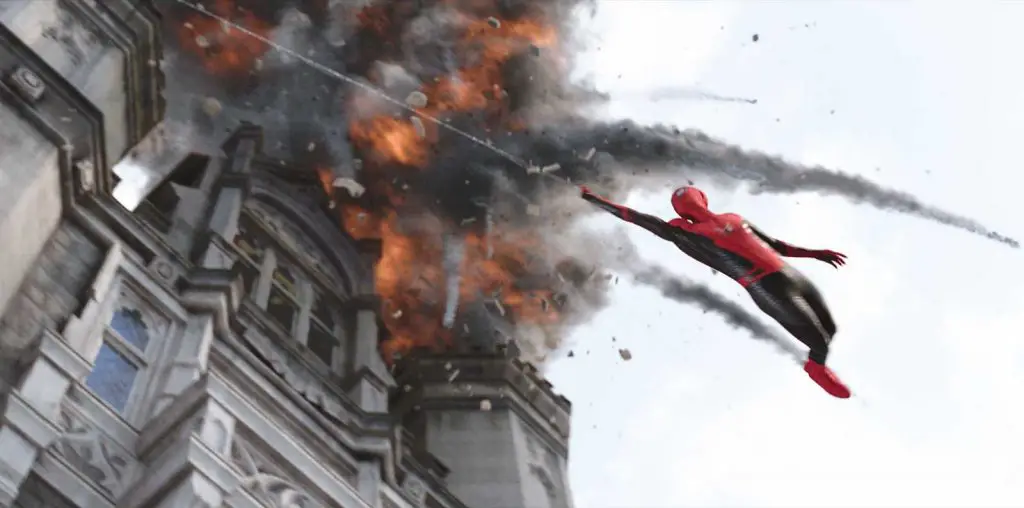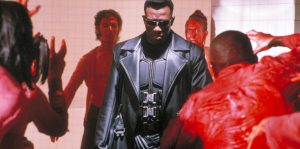
The late 1900s was not a good time for Marvel films. First, there was Howard the Duck, which is arguably better than Captain America or the Reb Brown starring TV movies of the character. But all that changed with director Stephen Norrington’s Blade, released in 1998. Originally, he was a minor character premiering in The Tomb of Dracula in 1973, which means I never read Blade and had no emotional connection to him. That said, wow, what a fantastic film adaptation from famed superhero writer David S. Goyer.
After being saved in utero when vampires killed his mother, Blade (Wesley Snipes) has all the supernatural abilities of vampires without the harmful effects. Ever since, he and his mentor, Whistler (Kris Kristofferson), have been engaged in a secret war against vampires. Whistler has designed weapons that exploit the undead’s weaknesses of sunlight, silver, and garlic, which Blade wields with ease.
During a battle at a rave club owned by the vampire Deacon Frost (Stephen Dorff), Frost’s henchman, Quinn (Donal Logue), is burned to a crispy corpse and regrettably sent to a nearby hospital where he bites the pretty hematologist Karen Jenson (N’Bushe Wright). Blade rescues her and warns her that she is now “marked.”
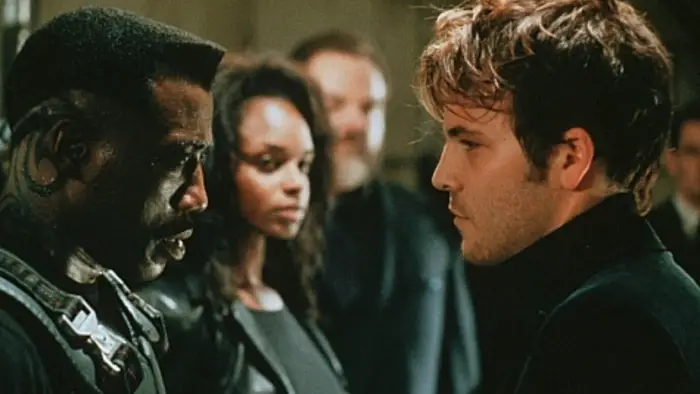
“…Blade is being hunted, [and] Dr. Jenson is on the verge of finding the cure to restore humans from their vampiric state…”
Meanwhile, internal strife between the council of pure-blood elders and Deacon Frost, along with his band of non-natural vampires, is tearing the society of the creatures of the night apart. Deacon plans to take down the council and rule over the living and dead by awakening the blood god La Magra. Blade’s blood and the members of the council are vital to this plan. So now Blade is being hunted, Dr. Jenson is on the verge of finding the cure to restore humans from their vampiric state, and the world needs saving.
As I was watching Blade, I began wondering if the comics I read are this convoluted as well. The answer is, of course, yes. But, as intricate as the story gets, there is a high degree of control as many of the plot twists and loose threads are doled out when needed, not just as an exposition. Balance and control are the operative words here. Blade could have easily gone off the rails with its supernatural end goal, over-the-top villains, and 90s nightclub locations. Instead, it maintains that perfect balance that kept me engaged, and I never checked out, even during some silly unnecessary moment. I admire how the vampires’ abilities are revealed throughout without ever feeling arbitrary or convenient. Goyer is at the top of his game, bringing vampire folklore to the big screen.
Honestly, the best part is the action. The fight sequences are spectacular and shot brilliantly. I miss the days when stunt coordinators couldn’t fall back on CG or “fixing it in post.” The editing is top-notch as the action flows oh so smoothly. Wesley Snipes is completely badass as Blade. His dialogue is efficient, never resorting to inane catchphrases. Lastly, the make-up and special effects are top-notch for when it was released (note the obese vampire, Pearl).
As intellectual property of Marvel Comics, it’s sort of a predecessor to how the MCU handles its history and fandom. Realistically speaking, no one really knew anything about Blade, nor did many readers know or have in-depth knowledge of the character. Guardians of the Galaxy and the soon-to-be-released Shang-Chi would be a good comparison. Goyer captures the proper inspiration from the comics and tells a more grounded story that allowed Marvel comics to produce several mini-series and soon reintroduce the vampire killer to the modern age. Blade is just good, plain action movie fun. It runs like a smooth roller-coaster and has excellent replay value.
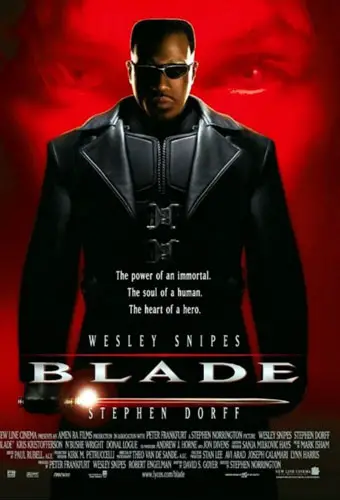
"…captures the proper inspiration from the comics and tells a more grounded story..."
